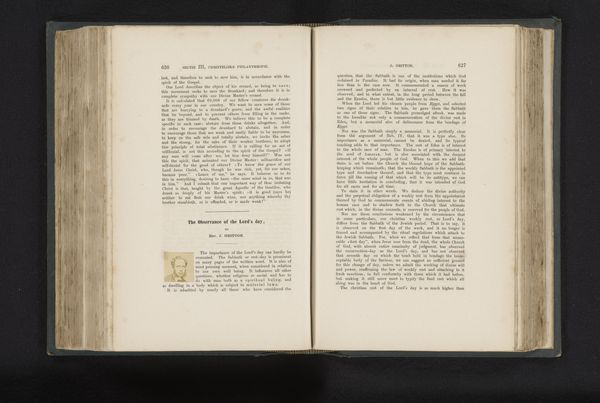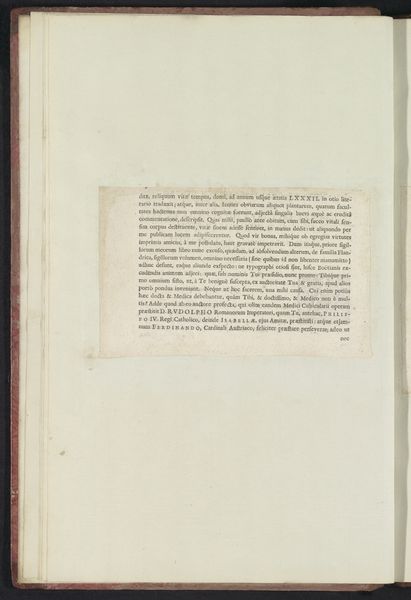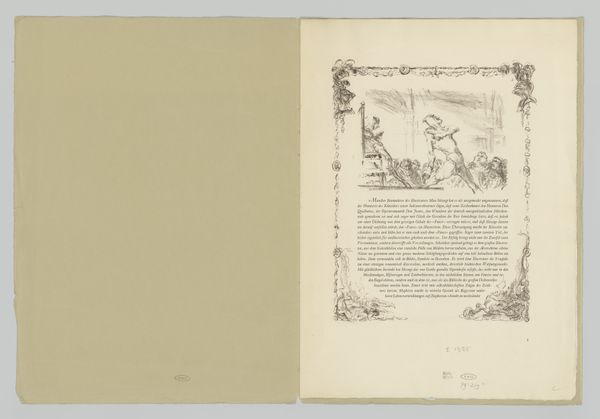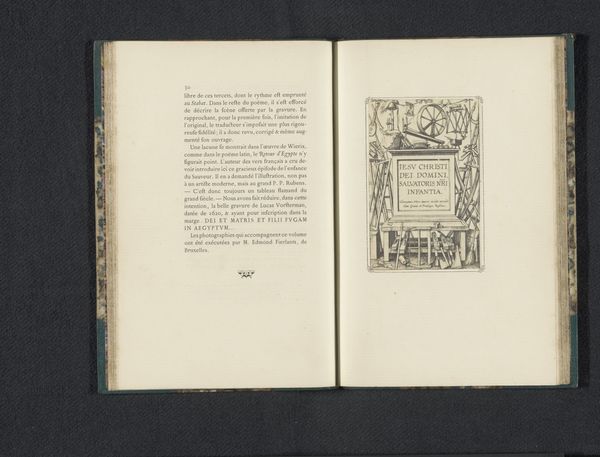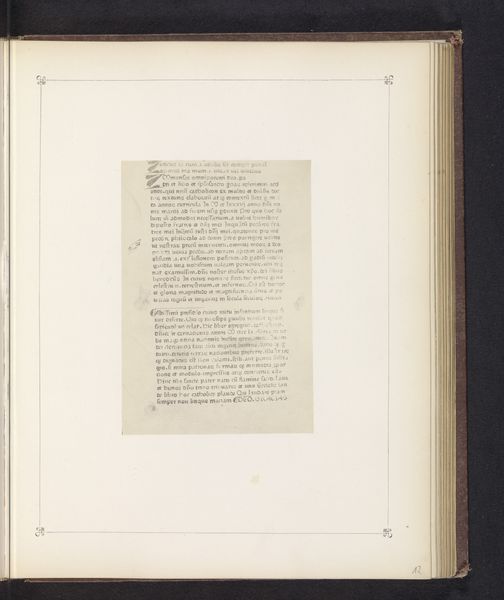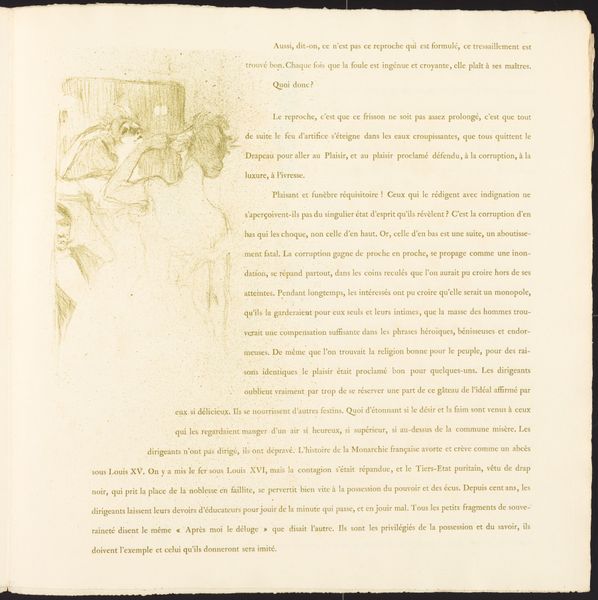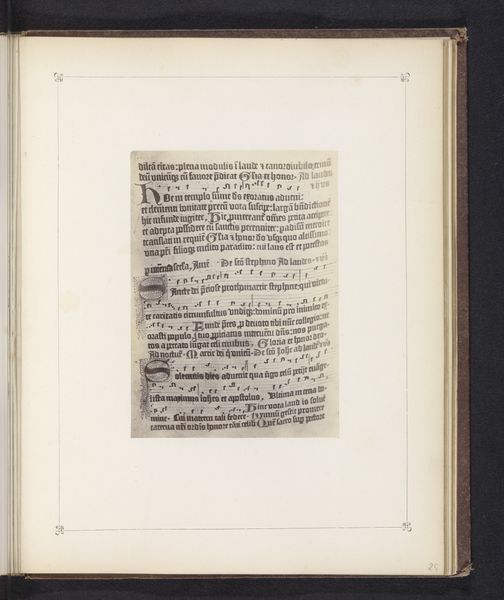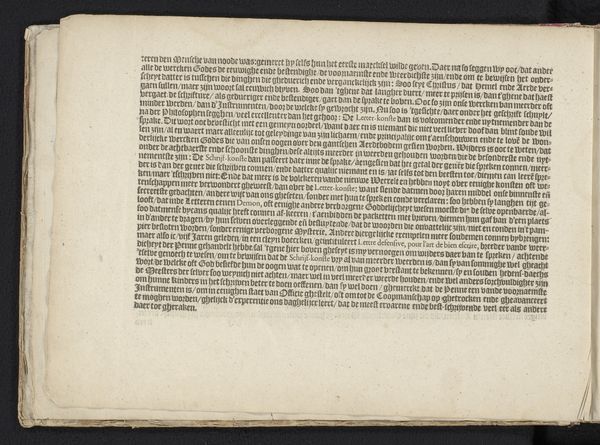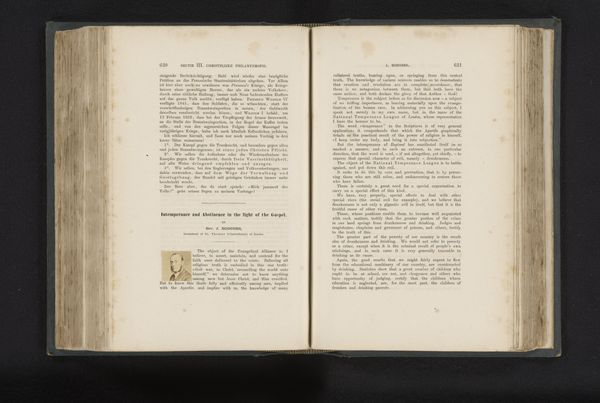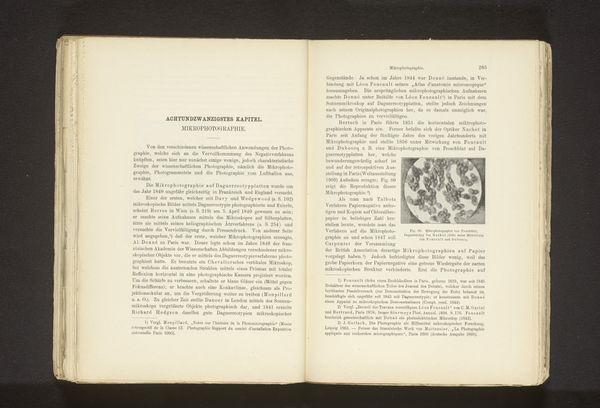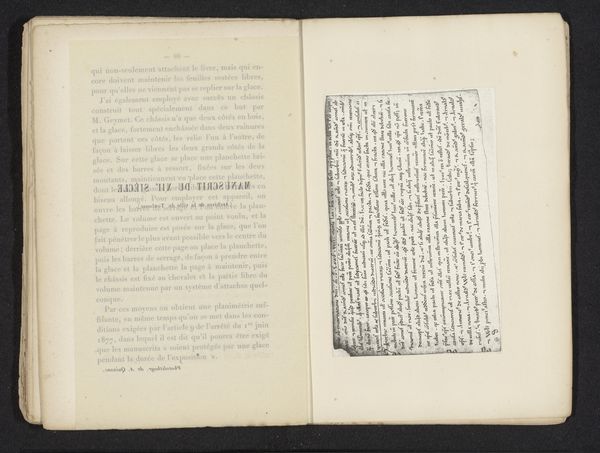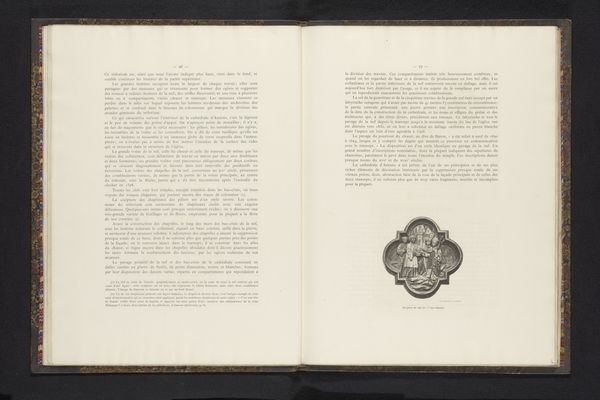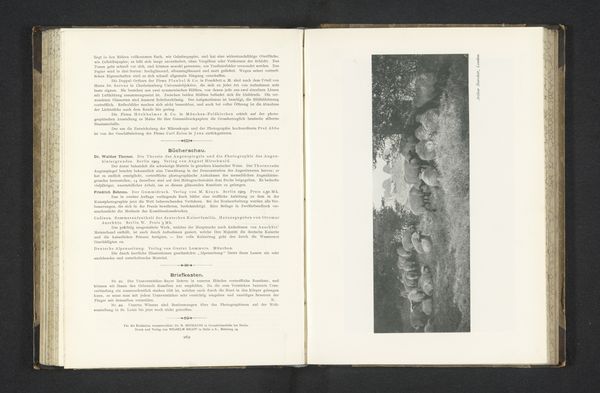
Dimensions: height 454 mm, width 330 mm
Copyright: Rijks Museum: Open Domain
This lithograph, created by Max Slevogt, presents us with a page from Goethe's "Faust," adorned with delicate, yet potent symbols. Note the sinuous, organic border framing the text, populated with figures that evoke the grotesque and the whimsical, hinting at the duality of human nature. The swirling motifs and hybrid forms—part human, part animal—echo the medieval tradition of marginalia, where the subconscious and the fantastical found expression, often serving as a commentary on the main text. We see this same impulse in earlier illuminated manuscripts, where demons and grotesques dance along the edges of sacred texts, embodying the tension between the spiritual and the earthly. Such images resonate deeply with our collective memory, tapping into primal fears and desires. Slevogt’s playful yet unsettling imagery reminds us that the human psyche is a battleground, a stage upon which the forces of good and evil, reason and instinct, forever contend. The image engages us on a subconscious level. Ultimately, the cyclical progression of this symbolism reminds us of the enduring power of images to transcend time, resurface, evolve, and take on new meanings.
Comments
No comments
Be the first to comment and join the conversation on the ultimate creative platform.

